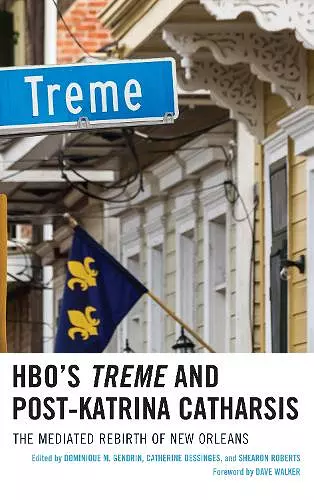HBO's Treme and Post-Katrina Catharsis
The Mediated Rebirth of New Orleans
Dominique Gendrin editor Catherine Dessinges editor Shearon Roberts editor
Format:Paperback
Publisher:Bloomsbury Publishing PLC
Published:7th Feb '20
Currently unavailable, and unfortunately no date known when it will be back

Ten years after Hurricane Katrina, outsiders will have two versions of the Katrina experience. One version will be the images they recall from news coverage of the aftermath. The other will be the intimate portrayal of the determination of New Orleans residents to rebuild and recover their lives. HBO’s Treme offers outsiders an inside look into why New Orleanians refused to abandon a place that many questioned should not be rebuilt after the levees failed. This critically acclaimed series expanded the boundaries of television making in its format, plot, casting, use of music, and realism-in-fictionalized-TV. However, Treme is not just a story for the outside gaze on New Orleans. It was a very local, collaborative experience where the show’s creators sought to enlist the city in a commemorative project. Treme allowed many in the city who worked as principals, extras, and who tuned in as avid viewers to heal from the devastation of the disaster as they experimented with art, imitating life, imitating art. This book examines the impact of HBOs Treme not just as television making, but in the sense in which television provides a window to our worlds. The book pulls together scholarship in media, communications, gender, area studies, political economy, critical studies, African American studies and music to explain why Treme was not just about television.
This edited collection focused on the HBO series Treme offers 12 essays from American and French scholars. The authors tackle how the series represents race, gender, and culture as well as how it exists within HBO’s broader programming strategy. Several chapters explore how the actual Treme neighborhood in New Orleans has responded to the filming and has adjusted to the new neighborhood tourism that resulted from the series. Other chapters examine how the social and economic repercussions of Hurricane Katrina are intertwined in the content and the storytelling structure. Of course, a central theme of the series is the music of New Orleans and the role of Mardi Gras, and the three chapters that explore these topics directly are particularly noteworthy for their analysis and insights. Thankfully, the authors resist the auteurist hagiography of David Simon, which can often materialize in scholarship about his work. Instead, when taken as a whole this collection offers a thoughtful exploration of the series and is a valuable contribution to studies of HBO programming. Summing Up: Recommended. Lower-division undergraduates through faculty. * Choice Reviews *
As a New Orleans native, one of the biggest struggles observed post-Katrina is the battle on behalf of the natives to hold on to the city’s authentic cultural heritage. The writers offer honest perspective and explore the dilemma that results when those who are attracted to what they see on a TV show like Treme attempt to make perception reality by moving to a place like New Orleans and unintentionally eroding the culture they so long to experience in the process. Such critical perspective is long overdue. -- Kim M. LeDuff, Vice President of Academic engagement and Chief Diversity Officer, University of West Florida
This poignant collection of essays succinctly illustrates the juxtaposition between televised historical fiction and the real life struggles of a city trying to regain its footing following one of the worst natural disasters in modern American history. The authors offer compelling analysis of the depiction of post-Katrina New Orleans in David Simon’s 'Treme' and carefully explicate the uniqueness and sometimes ornery culture of the city still learning lessons from the storm. Every scholar of media and cultural studies should read this book. This is social, cultural, and political critique at its very best. -- Cheryl Jenkins, University of Southern Mississippi
ISBN: 9781498545624
Dimensions: 223mm x 154mm x 21mm
Weight: 535g
374 pages